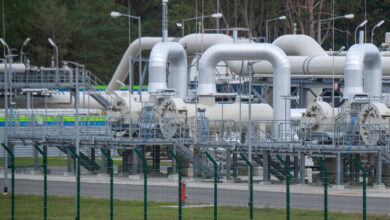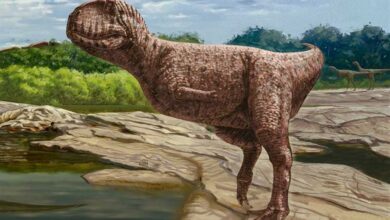A week ago, Essam Sharaf announced with great fanfare the launch of the “Corridor of Development” mega project, designed by Egyptian-American scientist Farouk al-Baz, and carrying a US$24 billion initial budget.
Al-Baz, who has been lobbying for this project in front of ministers and scientists alike for the past seven years, both in Egypt and abroad, aims at building a 1200km superhighway along the Nile in the Western Desert from Alamein to Aswan with an interconnected railroad, water pipeline and electric power line. He also plans to construct 12 additional cross-cutting corridors that would link this eight-lane highway to Egypt’s major cities.
According to a scientific paper by al-Baz, entitled “Use of a Desert Strip of the Nile Valley for Sustainable Development in Egypt”, the Corridor of Development will open new land for urban development, commerce, agriculture and tourism, and create hundred of thousands of job opportunities by installing new infrastructure along its route.
The project, which has been accepted by the prime minister following a meeting with the scientist last Tuesday, is supposed to get underway in the next six months, and is expected to be completed in ten years.
Although the project has been accepted by an high-level cluster of ministers, businessmen and developers, the entire local scientific community is showing stiff and unanimous opposition.
Famous geologist Samer al-Mofty is an expert in desertification. He also used to be the president of the Egyptian Desert Research Centre in Matareya. In 2008, the Ministry of Economic Development asked him to become the executive coordinator for the Corridor of Development’s previous feasibility study. “Along with a team of 45 scientists of various specialties, we studied the ground of the Western Desert to determine the feasibility of such a grand project,” al-Mofty explains.
Most of the scientists involved are keen on one key aim of the project: the redistribution Egypt’s population, which is currently crammed into 6 percent of the territory along the narrow Nile Valley and the Delta. However, the Western Desert presents major technical problems.
Al-Baz writes in his study that the whole Western Desert strip earmarked for the longitudinal corridor is mainly flat and is defined by a gentle slope from the west of Aswan downwards to Matrouh.
Al-Mofty disagrees, explaining that the Western Desert is a wide plateau, rising to 500 metres above sea level to the west of Aswan, and dropping to 200 meters on the north coast, making it considerably higher than the land in the Nile Valley.
“It would be impossible to transfer the Nile and Delta water, located at 90 metres above sea level, to the plateau because this would require the building of pumping stations that would cost millions of pounds, in a context where there is already a lack of water in the Nile,” says al-Mofty.
Discarding the water of the Nile as a potential resource for the project, al-Mofty then studied the existing aquifers to determine whether they could supply enough water for the Corridor of Development.
“Egypt has three resources of groundwater: first there is the Nubian sandstone, a 1000-meter-deep aquifer that is shared by Egypt, Libya and Sudan, and which is believed to contain between 200 million and 600 million cubic meters of water.” Although the water is fine for agriculture because of its lack of salinity, its depth would require the construction of extremely costly wells to reach it.
“The second aquifer, which is located 300 metres underground, has saline water. And, finally, there are some pockets of water in the North Coast, which are barely re-filled due to the lack of rainfall,” he explains.
But water is not the only problem the Corridor of Development is expected to face in the first phases of development.
Bahi al-Issawi is one of Egypt’s most respected geologists. In addition to having a great knowledge of the Egyptian desert, having studied it all his life, he also worked on Egypt’s Toshka mega project.
Originally, the Toshka project had the aim of increasing Egypt’s arable lands from 6 percent to 35 percent of the national territory by using a system of canals to divert the waters of Lake Nasser to the Libyan Desert. In light of the absolute failure of this project, al-Issawi is understandably skeptical about the agricultural ambitions of al-Baz’s project.
“Whenever you want to develop a project in the desert, you need to make sure that you have at least three major parameters: water, sewage systems and soil,” he says. He agrees that for this project, one of the main problems is water, “because only rainfall can recharge the underground aquifers, and there is almost zero rainfall in the Western Desert.”
As far as soil is concerned, the Western Desert is covered with limestone, while the rest of the plateau is chiste, basalt and sandstone. “These types of rocks can never be turned into an acceptable soil for cultivation,” al-Issawi says. “Of course, we could bring some soil and use sand to cultivate, but this will cost an enormous amount of money,” he adds.
The third parameter that has to be considered is the sewage system. According to al-Issawi, all the sewage systems in the Western Desert run northwards and are discharged into the Mediterranean from Damietta. “The main problem is that there are difficulties evacuating the water used for agriculture, and as a consequence salt settles at the bottom of the basins and depletes the land,” he explains.
“This is what happened in Toshka: it failed because it had no soil and no proper sewage system,” says al-Issawi.
Although al-Issawi is generally opposed to al-Baz’s project, he admits that two of the planned corridors would be proper for land reclamation and agriculture activities.
“The corridor that links the north of Cairo to Fayoum has 60 square kilometers of desert that should be developed, and there is also a desert area of 40 square kilometers between Fayoum and Beni Soueif, which should be reclaimed because you have water in Fayoum that could be either extracted from the Nile through a pumping system, or brought to the area by irrigation canals,” he explains. He also mentions the corridor going from Kom Ombo westwards, where 30 square kilometers could easily be cultivated, as the area enjoys perfect soil.
“But we certainly don’t have the money to conduct a proper survey for the 12 corridors. It would take years and cost millions,” al-Issawi points out, adding that the mere mapping of the corridors would demand an extraordinary drilling effort.
Al-Mofty is dumbfounded by the government’s decision to launch this US$24 billion project without having studied the reasons for the failures of similar projects in the past.
“Toshka wasted LE300 billion. Abo Tartour — a phosphate mine in the area of Wadi al-Gebel in the Western Desert, on the same latitude as Assiut — cost LE16 billion. Not to mention other failed projects like Modereyet al-Tahrir and Sadat City,” he says. Al-Mofty also points to the Wadi al-Gedid project. Launched in 1958, this project aimed at reclaiming 3.5 million of feddans for agriculture purposes. “Since 1958, only 38,000 feddans have been reclaimed on the 3.5 million planned!” says al-Mofty.
Insisting on the fact that Egypt ranks first in the list of dry countries in the World, and adding that the Western Desert is the most arid place on the planet, al-Mofty points out that the desert is completely devoid of natural resources, which is a major obstacle to development.
“Look at the road called Darb 40. It is an ancient slavery road that links Assiut to the oases of Dakhla and Baris and goes all the way down to Sudan. For some time now it has been used for camel caravans coming from Africa. Well, this road was never developed because the area has strictly no resources!” he says.
He also says that Egypt would do better to invest these billions of dollars in rehabilitating routes that already exist, as well as the railway system. “When we have all these existing roads, why create new ones?” he asks.




